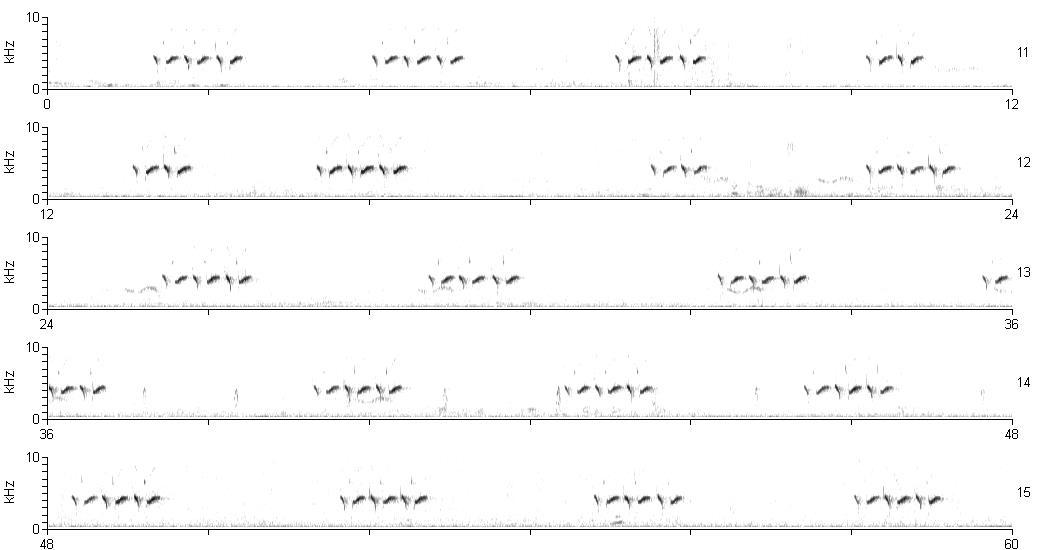
This is a nice song from a very cute bird. That is the first concentric ring of wonder around this recording. The sound has its own beauty, its own insistent simplicity, its subalpine purity. The bird, natty in its up-turned crest, black bib, gleaming white face, gray cape, and rufous undertail coverts, shows what you can do with a palette short on primay colors. Follow the species link to see for yourself.
The second ring is the little genus Periparus, a Himalayan specialty. All the recognizable forms, up to six of them, have those little crests, including the local Coal Tits, several subspecies of Periparus ater. But ater went forth and conquered Eurasia and northern Africa, and in spreading far and wide it lost the crest. Millions of people know that crestless Coal Tit, but don't know about the crested ones, or their relatives in Nepal and China.
The third ring is the family Paridae. Its genera include Old World gemera Parus, Cyanistes, Periparus, Lophophanes, and several others, New World Baeolophus, and Poecile, which spans the Northern Hemisphere. All were in one genus, Parus, until recently, but each of those names tells you as much as "Periparus" does, each distilled group has its own story.
The fourth ring is the commonalities among the vocalizations used by the entire family: The chick-a-dee calls that all those genera have, even Periparus, as we confirmed on this very day with the first cut on the eBird list. Though the coal tit group rarely use them, they know how to make them. We're not so sure about the Eurasian crested tits (Lophophanes). We think their chick-a-dee calls may have suffered the same fate as the crests of European Coal Tits. And, as mentioned before, the standard song syntax of the entire family is a few repeats of a simple phrase, with the singer eventually switching to a recogniably different variant for another long sequence.
The next ring is competitive exclusion. David Lack's semi-popular book Ecological Isolation in Birds (1973) introduced me to the idea that two species with identical ecological requirements can't coexist, and its prediction that very closely related species, e.g., ones in the same genus, won't occupy overlapping territories. This led to a lifetime of fascination with the Paridae. Obviously that prediction was hard to operationalize when all the parids were in the same genus (Parus), but splitting them into nearly a dozen genera took care of that problem. One of our goals in China was to test that prediction. Although it received only weak support, we did find that this species, which we called "rubi," was largely segregated from ater by elevation, as are many closely related species.
And so on. The more you know, the more you see. The more you see, the more you feel.